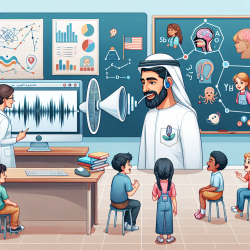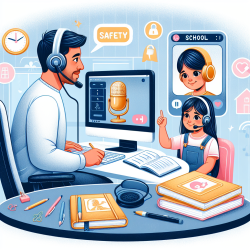As a practitioner dedicated to the well-being and development of children, it's essential to stay updated with innovative approaches and data-driven methods. The research article titled A Pilot Exploration of Speech Sound Disorder Intervention Delivered by Telehealth to School-Age Children offers valuable insights into the efficacy of telehealth as a service delivery model for speech sound disorder interventions in schools.
Key Findings from the Study
The study compared the progress of students receiving speech sound disorder interventions via telehealth with those receiving traditional side-by-side therapy. Here are the critical outcomes:
- Both groups made significant improvements in speech sound production, as measured by pre- and post-intervention scores on the Goldman Fristoe Test of Articulation-2 (GFTA-2).
- Students in the telehealth condition demonstrated greater mastery of their Individual Education Plan (IEP) goals compared to the side-by-side group.
- The study found no significant difference in the overall effectiveness of the two service delivery models, suggesting that telehealth is a viable method for delivering speech sound disorder interventions.
Implementing Telehealth in Your Practice
Based on the study's outcomes, here are some practical steps for implementing telehealth interventions in your practice:
- Utilize Reliable Software: Choose a robust telehealth platform that supports interactive videoconferencing and provides tools for data collection, progress monitoring, and report writing. The study used TinyEYE Speech Therapy Software, which includes interactive activities and games that can be individualized for each student.
- Train Support Staff: Ensure that an e-Helper, or a classroom assistant, is trained to handle technical issues and provide supervision during telehealth sessions. This will help maintain a smooth and effective intervention process.
- Monitor Progress Consistently: Use standardized tests like the GFTA-2 and regular progress reports to track student performance and adjust intervention strategies as needed. Consistent monitoring ensures that students are meeting their IEP goals effectively.
- Foster Collaboration: Develop communication channels with classroom teachers and other stakeholders to ensure that telehealth interventions are integrated with the students' overall educational experience. This can be done through email, video conferencing, and regular meetings.
Encouraging Further Research
While the initial findings are promising, further research is essential to refine and expand the use of telehealth for speech sound disorder interventions. Future studies could focus on:
- Assessing the reliability of telehealth for various types of communication disorders.
- Comparing different telehealth platforms and technologies.
- Investigating the efficacy of telehealth interventions for different age groups and communication impairments.
By continuing to explore and validate telehealth interventions, we can ensure that all children, regardless of their location, have access to high-quality speech therapy services.
To read the original research paper, please follow this link: A Pilot Exploration of Speech Sound Disorder Intervention Delivered by Telehealth to School-Age Children.










